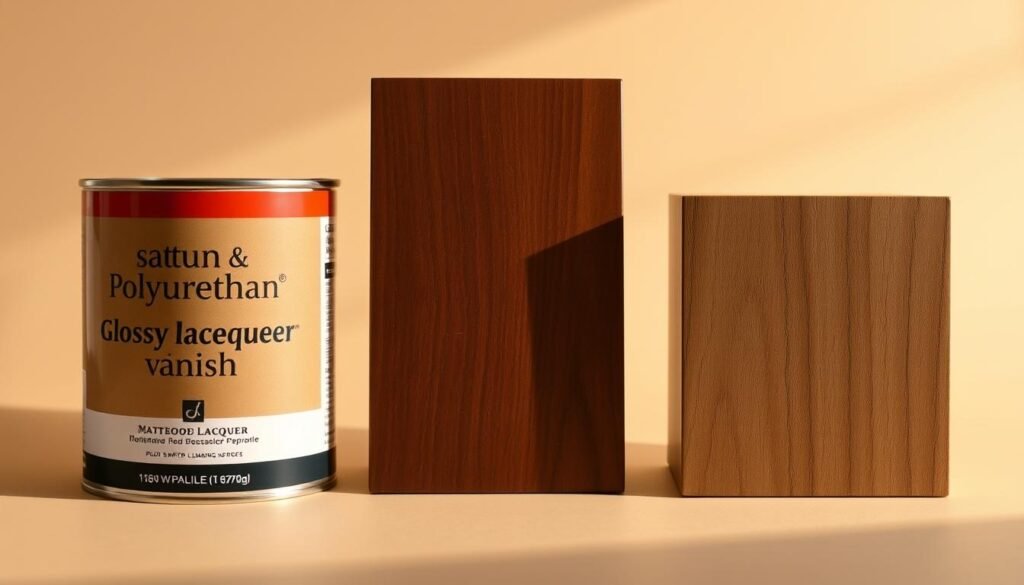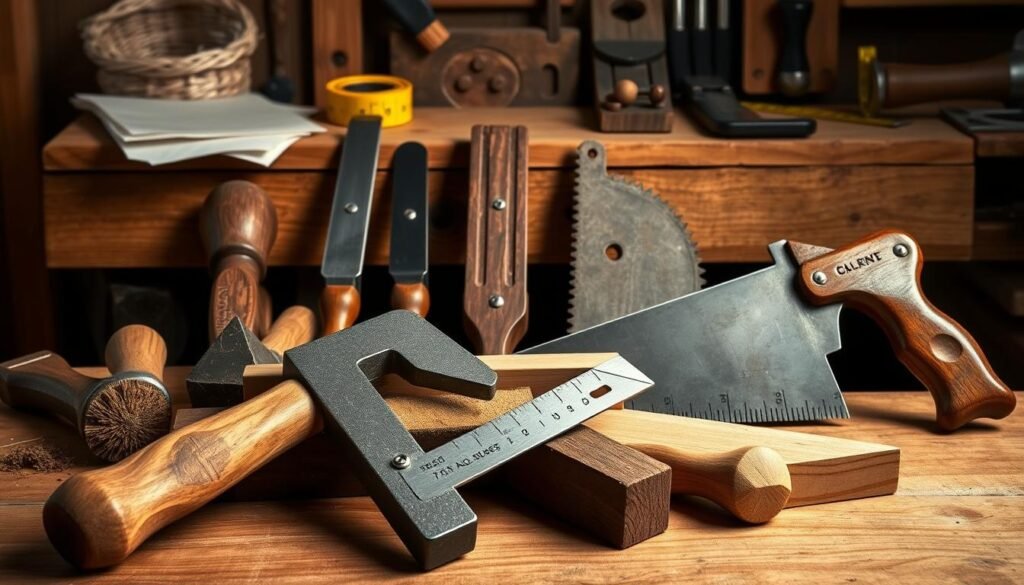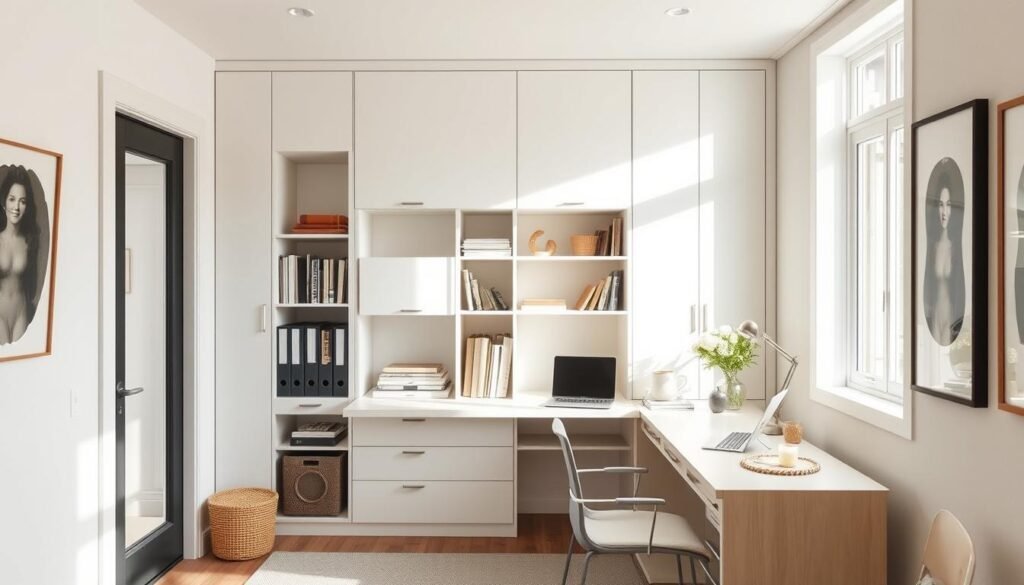Choosing the right wood is key for a successful project. It doesn’t matter if you’re a DIY fan or a pro. Each project needs specific wood qualities like durability, grain, and price.
Knowing which wood to use for what is important. Some woods are great for furniture because they’re strong and look good. Others are perfect for DIY projects because they’re easy to work with and won’t break the bank.
By picking the right wood for your project, you’ll get better results. This guide will help you understand which wood types are best for different projects. You’ll learn how to choose the perfect wood for your next project.
The Basics of Wood Selection for Your Projects
Understanding wood selection basics is key to making smart choices for your projects. The right wood depends on the project’s purpose, needed durability, and desired look.
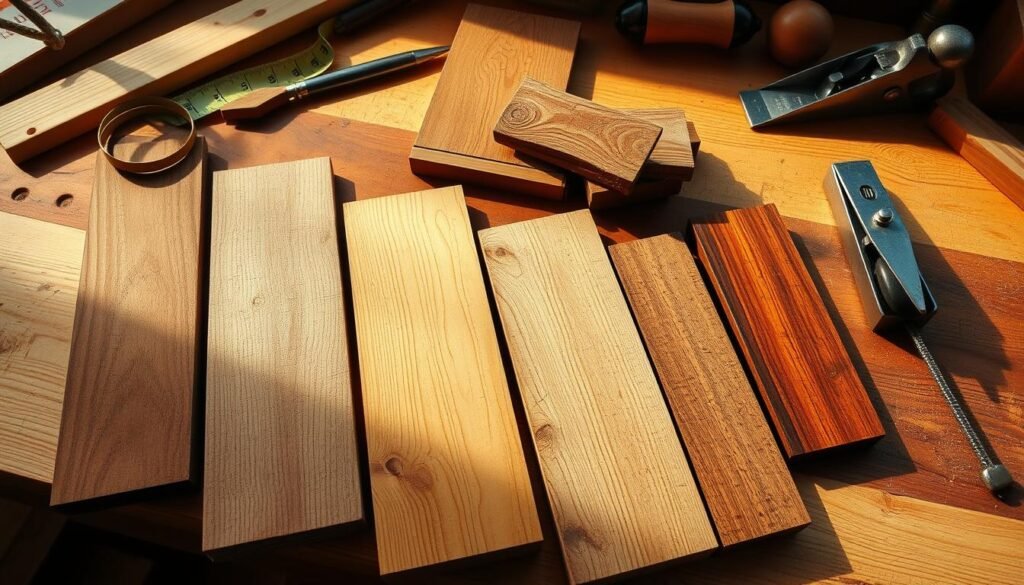
Think about the project’s exposure to moisture, sunlight, and temperature changes. For outdoor projects, woods like cedar or redwood are good. They resist rot and insects well.
The wood’s look is also important. Its grain, color, and texture greatly affect the project’s beauty. For example, maple is picked for its light color and fine grain. Walnut is chosen for its deep, dark tones.
By considering both durability and looks, you can pick the best wood for your project. This ensures it meets your needs and looks great.
Understanding Hardwoods vs. Softwoods
The world of wood is divided into two main types: hardwoods and softwoods. This isn’t about how hard or soft the wood is. It’s about the tree it comes from.
Hardwoods come from deciduous trees, which lose their leaves every year. These woods are denser and have a more complex structure. Examples include oak, maple, and walnut. They’re often used for furniture, flooring, and other durable needs.
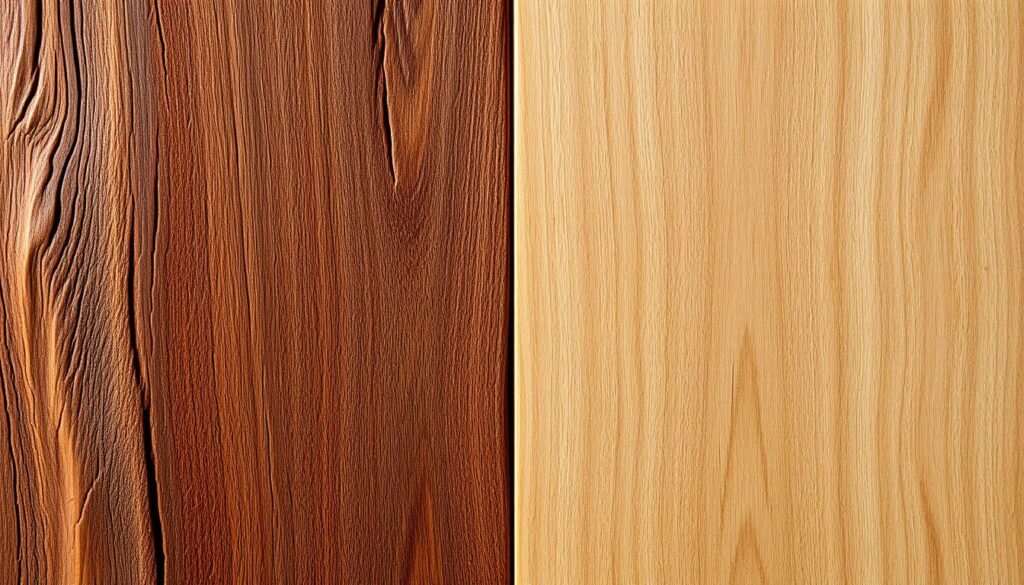
Softwoods, on the other hand, come from coniferous trees, which keep their needles all year. These woods are less dense and simpler in structure. Pine, cedar, and spruce are common softwoods. They’re used in construction, packaging, and furniture where a lighter wood is okay.
Knowing the difference between hardwoods and softwoods is key when choosing wood for a project. By understanding their characteristics and uses, you can make better choices. This leads to the best results for your project.
Key Factors to Consider When Choosing Wood
When picking wood, think about a few important things. These include how durable it is, its cost, how easy it is to find, and if it’s good for the environment.
Durability matters a lot. It shows how well the wood can handle daily use. For instance, oak is great for furniture because it’s strong and lasts long.
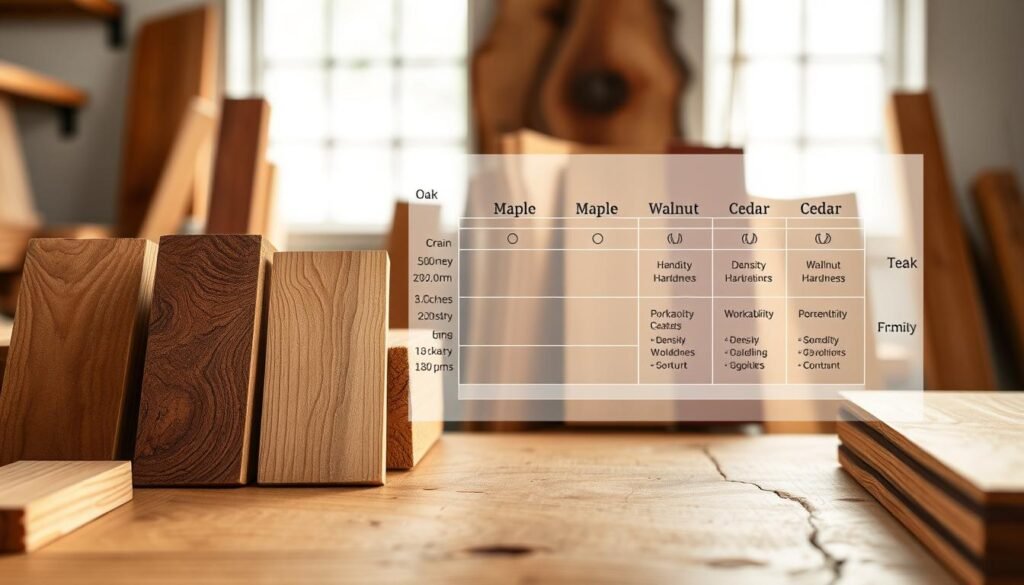
Nowadays, how green the wood is also matters a lot. This means looking at how it affects the planet. Look for FSC (Forest Stewardship Council) labels to know it’s eco-friendly.
Also, think about the wood’s carbon footprint. Wood from nearby places is better for the planet than wood from far away.
By keeping these points in mind, you can choose wood that fits your project’s needs and values.
Common Wood Types and When to Use Each
Knowing about common wood types is key to picking the right wood for your project. Each project has its own needs, like durability, look, and cost. This guides us in choosing the best wood.
Oak is a top pick for furniture because it’s strong and has a beautiful grain. It comes in red and white oak, each with unique traits. Red oak is great for furniture and floors, while white oak is best for outdoor use because it lasts longer and resists moisture.
Maple is versatile and known for its light color and fine grain. It’s used for furniture, cabinets, and floors when a light look is wanted. Maple also holds up well in busy areas.
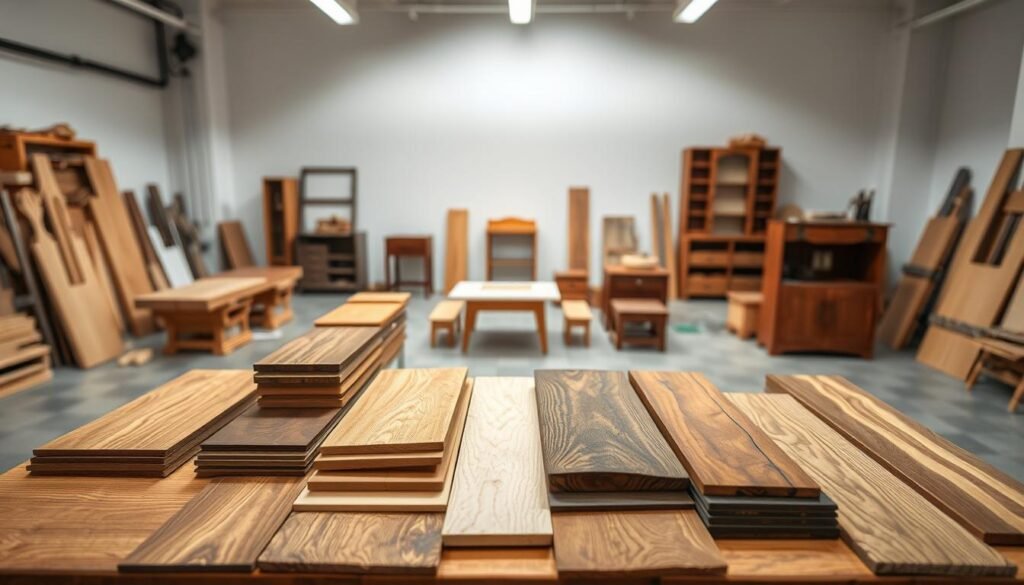
Pine is a softwood that’s affordable and easy to find. It’s used for building and furniture making. It’s perfect for a rustic or worn look.
When picking a wood, think about how you’ll use it, what it should look like, and your budget. Knowing about different woods helps you choose the right one. This choice will improve your project’s quality.
Oak: The Versatile Classic
Oak wood has been around for centuries, used in furniture and flooring. It’s strong and durable, making it a favorite among woodworkers and homeowners.
The oak wood texture stands out with its prominent rings and flecks. This adds elegance to any furniture piece. The pattern shows the wood’s durability.
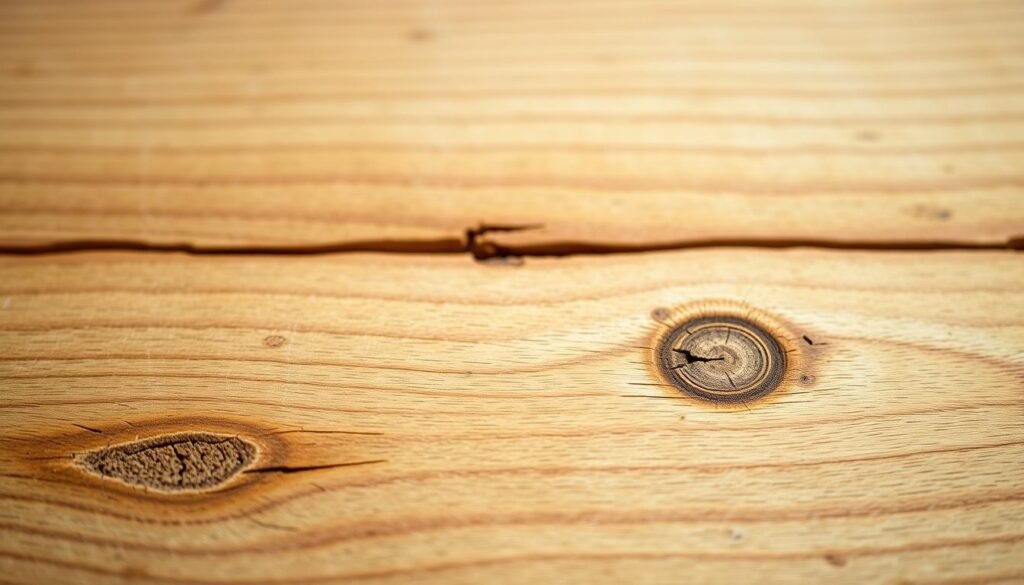
Oak is top-notch for furniture because it’s tough and lasts long. It’s great for items like dining tables and chairs that get a lot of use.
Oak is also loved for its looks. With variety of wood types like white and red oak, it fits many decor styles. You can stain or finish it to match your taste, from traditional to modern.
In summary, oak is a classic choice for furniture. It combines durability, beauty, and versatility in a way that’s hard to beat.
Maple: Strength and Beauty Combined
Maple wood is strong and beautiful, perfect for many uses like furniture and flooring. It’s very durable, lasting a long time even with heavy use.
Maple wood is known for its light color and fine grain, giving it a modern look. Its straight wood grain adds to its strength, making it great for projects needing both looks and function.
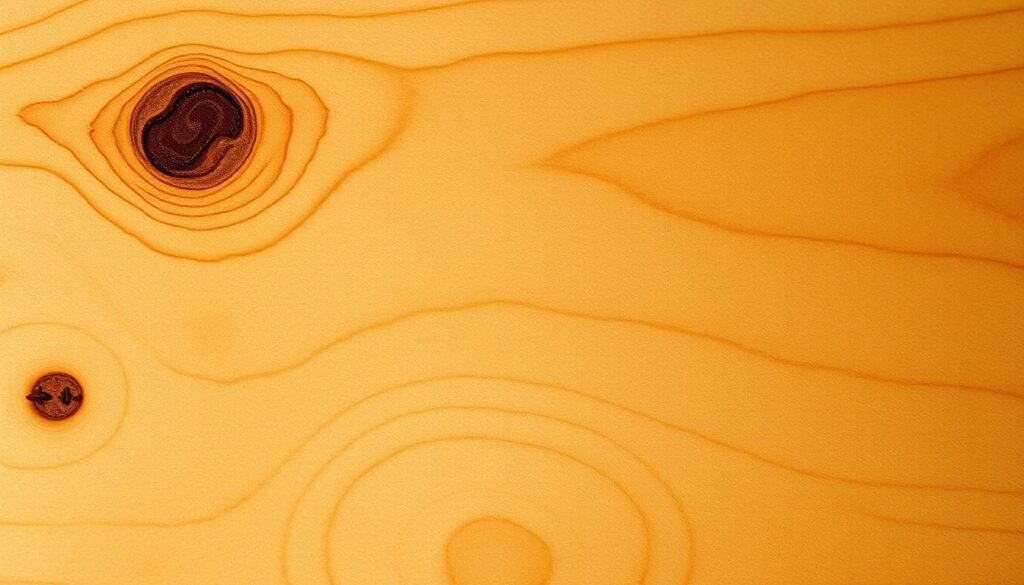
In furniture making, maple wood stands out because it can be stained in many colors. This makes it easy to match different design styles. Whether you want a classic or modern look, maple can be finished to fit your taste.
For flooring, maple is a top pick because it’s hard and resists scratches and dents. Its light color also makes rooms seem bigger and brighter, perfect for those who want a spacious feel.
Maple wood is a top choice for many woodworking projects because of its strength, beauty, and versatility. Its durability means it will stay beautiful and useful in your home for many years.
Pine: Affordable and Accessible Softwood
Pine is a standout among softwoods for its versatility and affordability. It comes from pine trees found across the Northern Hemisphere. Its light color and fine grain make it great for furniture and construction.
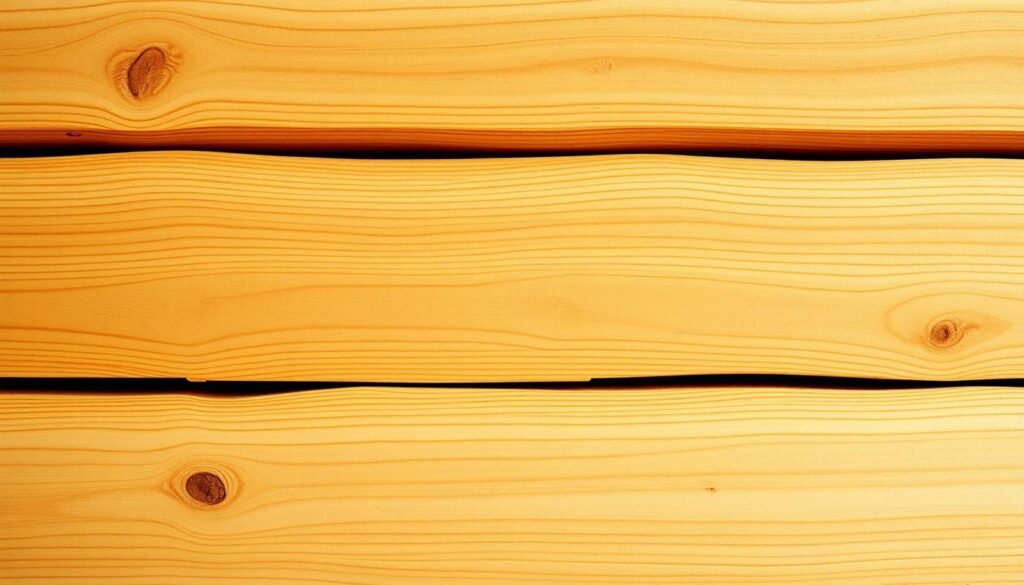
Pine is loved for being affordable and easy to find. It’s cheaper than many other woods, perfect for big projects or tight budgets. Plus, it’s available at most hardware stores and home improvement centers.
Pine for DIY Projects and Construction
Pine wood is perfect for DIY projects because it’s easy to work with. You can cut, drill, and shape it with basic tools. It’s great for making furniture, shelving, and more.
In construction, pine is used for framing, paneling, and roofing. It’s strong and doesn’t warp easily. You can also stain or paint pine to fit different styles. It’s a practical and affordable choice for any project.
Walnut: Premium Dark Beauty
Walnut wood is famous for its luxurious dark beauty and fine grain. It’s a top pick for high-end furniture. Its rich, dark color adds elegance to any room. Plus, its durability makes it a treasured piece for years.
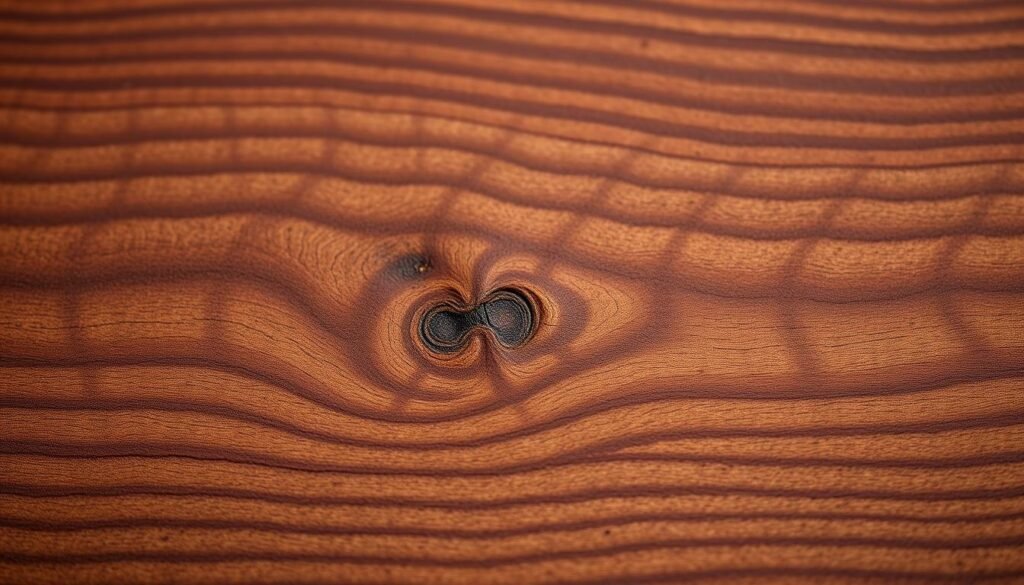
Walnut is loved for its beauty and strength in making furniture. Its premium texture has a distinctive dark hue and fine grain. It’s a favorite among craftsmen and designers. For those wanting to add sophistication, walnut furniture is a great choice.
Walnut in High-End Furniture
In high-end furniture, walnut is often the top choice. It’s known for its luxurious look and lasting quality. Designers and homeowners love its beauty and durability.
For inspiration, check out wood textures and designs in home furnishings. Walnut adds value and beauty to any room. Its dark beauty fits many design styles, from modern to traditional.
Cherry: Aging to Perfection
Cherry wood is loved for its beautiful grain and how it ages. It starts with a rich, reddish-brown color. Over time, it develops a stunning patina.
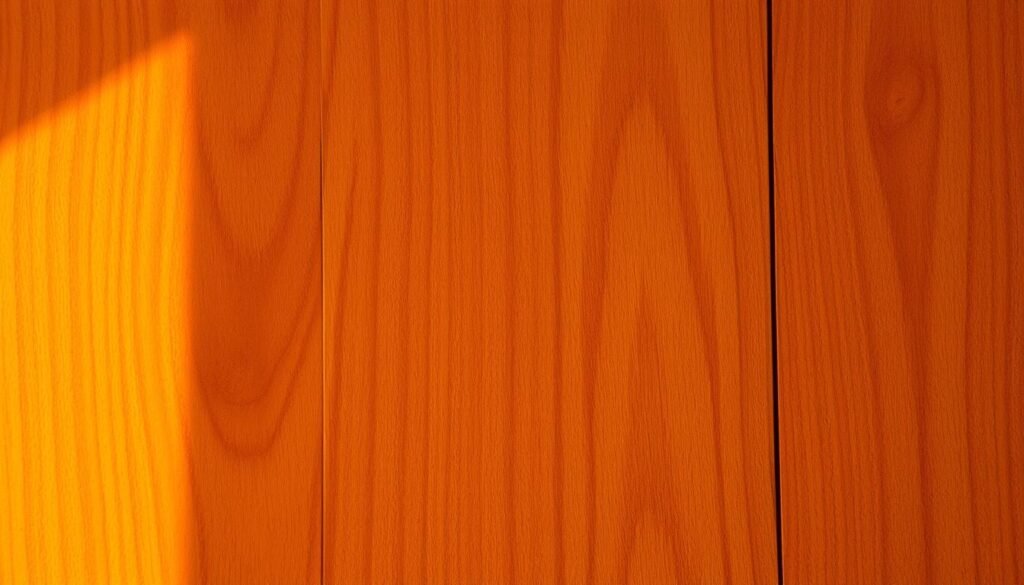
As it ages, cherry wood turns a deeper red. This adds to its beauty and character. It’s perfect for making pieces that will last for many years.
Cherry in Furniture Making and Cabinetry
In furniture and cabinetry, cherry wood is valued for its workability. It also takes a smooth finish well. Craftsmen like it for its fine grain, which allows for detailed designs.
Cherry wood’s warm tones and classic look make it popular. It’s durable and doesn’t warp easily. This makes it great for many uses, from cabinets to decorative trim.
Using cherry wood in a room adds sophistication and warmth. It’s a material that’s hard to beat for elegance.
Cedar, Redwood, and Other Outdoor Woods
Outdoor wood projects need materials that can handle the weather. Cedar wood and redwood are top picks for outdoor use. They naturally resist rot and insects.
Cedar wood has oils that keep insects away and prevent decay. It’s perfect for outdoor furniture and decking. Its smell and look make it very popular.

Redwood is loved for its rich color and lasting quality. It’s great for fencing, decking, and garden furniture. Other woods like cypress and teak also offer good benefits.
These woods naturally fight off weather damage. They can last for years with little care. This makes them a smart choice for saving money over time.
Choosing the right wood for your outdoor project is key. Think about how much weather it will face and what look you want. The right wood ensures your project stays beautiful and strong for years.
Exotic and Specialty Woods
The world of woodworking is vast and exciting. It includes exotic and specialty woods. These woods are loved for their unique looks and colors.
Woods like Ebony and Rosewood add luxury to woodworking projects. They are perfect for making high-end furniture and musical instruments.
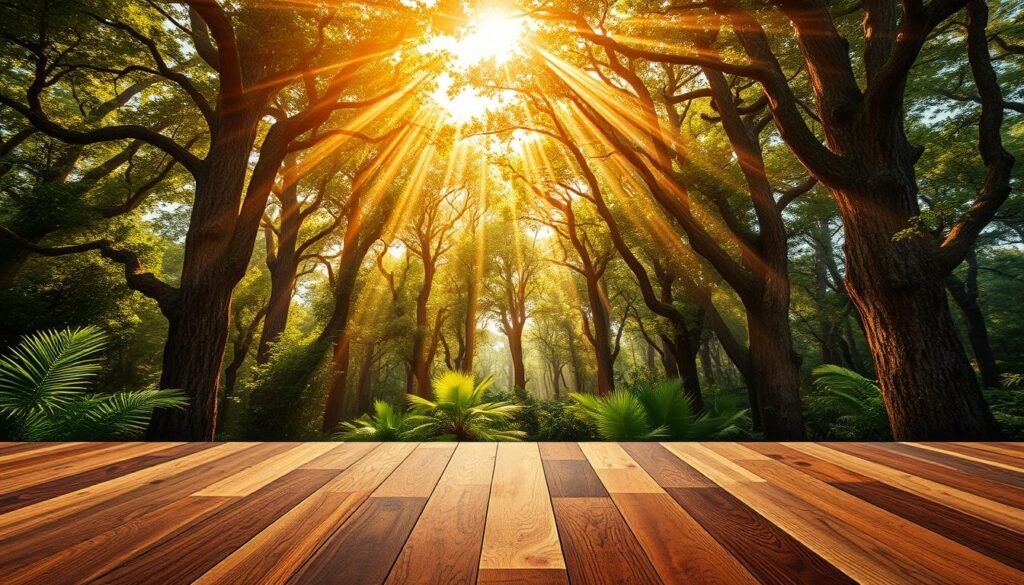
If you want more woodworking tips, check out woodworking mastery tips. They offer great advice.
Applications in High-End Projects
Exotic and specialty woods are used in high-end projects. They are chosen for their beauty and durability. For example, Bubinga and Koa are not only beautiful but also stable.
These woods are perfect for projects where the wood’s beauty is key. They are used in fine furniture, decorative veneers, and musical instruments.
Engineered Wood Products: Modern Alternatives
Engineered wood products have changed the game in construction and furniture making. They are made by mixing wood fibers or strands with adhesives. This makes them often stronger and more stable than natural wood.
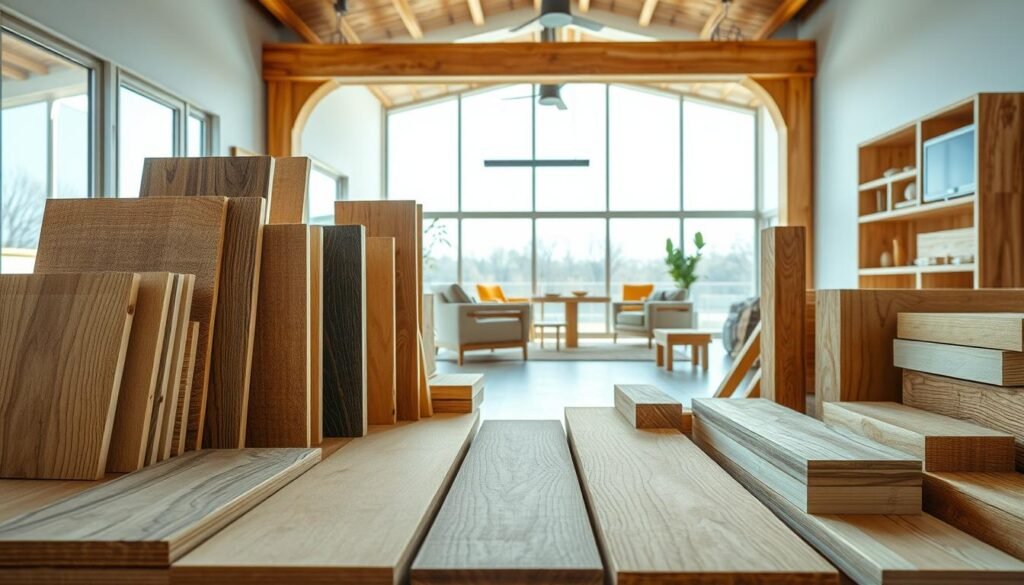
There are many types of engineered wood products. These include plywood, MDF (Medium-Density Fiberboard), and OSB (Oriented Strand Board). Each has its own special features and uses.
Plywood is great for making furniture and building because it’s strong and flexible. MDF is best for smooth finishes, like in cabinetry and molding.
OSB is used for structural parts, like wall sheathing and roofing. It’s affordable and lasts a long time. Engineered wood products save money, are eco-friendly, and cut down on waste.
They also don’t warp or shrink as much as solid wood. This makes them perfect for today’s building and furniture needs.
Conclusion
Choosing the right wood for furniture can be tough with so many options. We’ve looked at common wood types, their features, and when to use them.
Think about durability, grain pattern, and color when picking wood. Mixing different woods can make a room look interesting. But, it’s key to pick wood tones that match well. For example, oak and maple or walnut and cherry can look great together.
The best wood for your project depends on what you need, your style, and your budget. Knowing the good and bad of different woods helps you make smart choices. This way, you can make furniture that’s both beautiful and lasts a long time.

